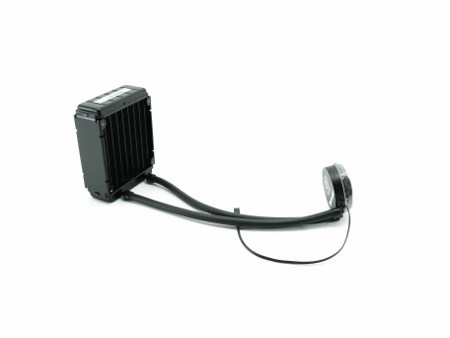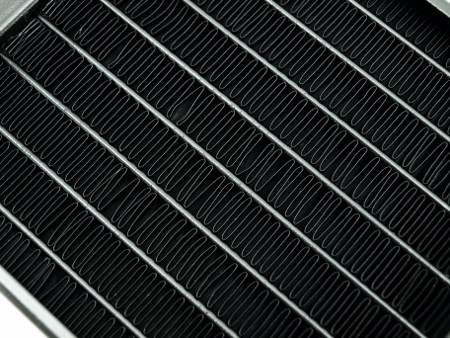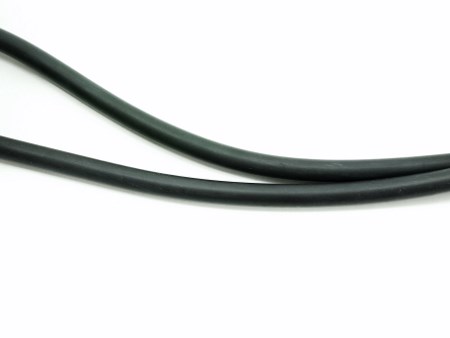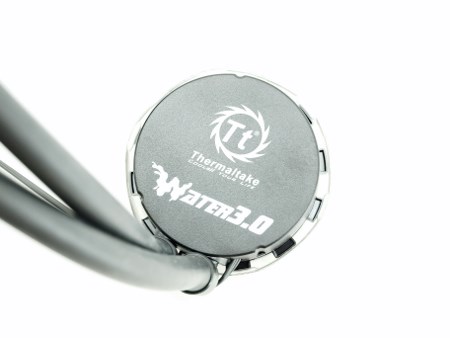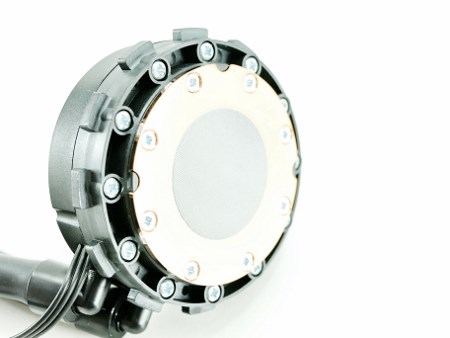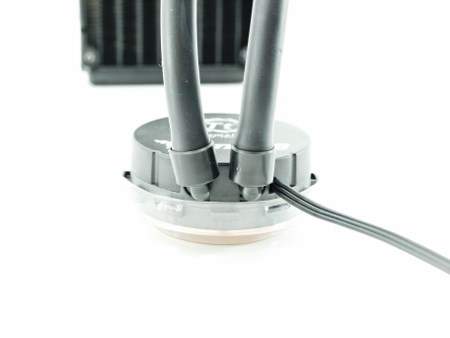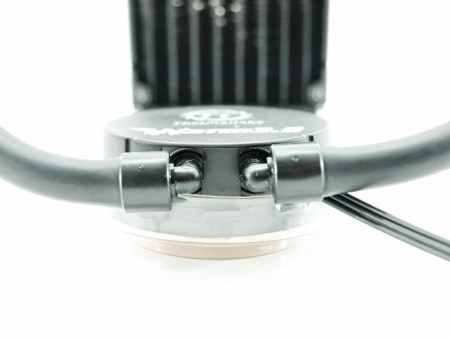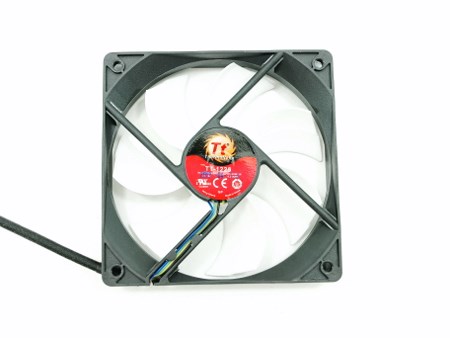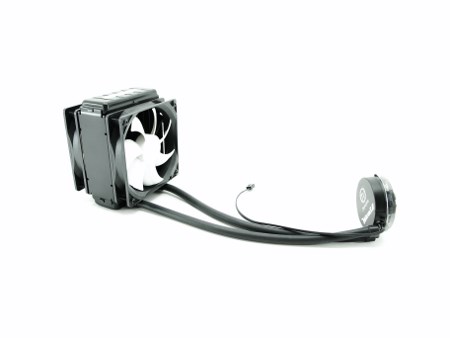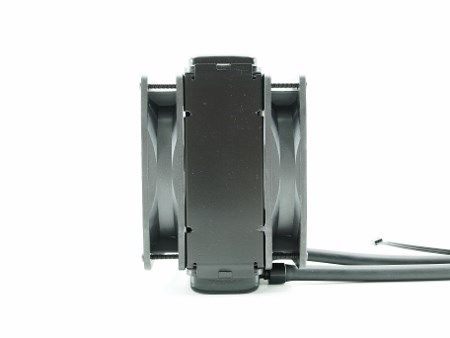INTRODUCTION

Overclockers, enthusiasts and gamers are perhaps the 3 main groups of people who put performance above everything else including money and noise levels so it's really no surprise that their choices include high airflow towers and hardware components with excellent performance yet very high power consumption and noise levels. Not everyone however is a fan of noise and that's why many people either turn towards passive CPU Cooling solutions (for example the HR22) or towards AIO Liquid CPU Coolers that can do a very good job at keeping the CPU Cool without the need of high airflow levels inside the tower. Roughly two years ago Thermaltake released the Water 2.0 line of AIO Liquid CPU Coolers which did a great job competing with the similar solutions released by Antec and Corsair so it was only a matter of time before Thermaltake took that line back to the drawing board and improve it as much as possible. Today we will be taking a look at the Water 3.0 Pro AIO Liquid Cooling Solution which aims to dominate the single 120mm AIO market.
The beginning of every myth and legend is about dreams and desire: the challenging, creative and combative features of Thermaltake Group create an exciting and fascinating user experience to share with everyone, while allowing users to enter a selfless state in terms of function and potential. Thermaltake Group's 3 main brands: Thermaltake, Tt eSPORTS and LUXA2 have been merchandising throughout the world, and have successfully established 6 business footholds in areas such as Europe, America, Oceania, Japan and China, with 95 regional distributors and over 4000 premium retailers. All product planning is orientated by observation of global PC peripheral market and understanding of consumer demands. Thermaltake creates direct contact opportunities with resellers and consumers by participating major global ICT exhibitions and trade shows every year, and develop innovative marketing strategies for the promotions of new products. Meanwhile, Thermaltake incorporates the composite marketing system by making branch offices and regional distributors both the distribution channel and technical support or service center to provide instant support; by maintaining close contact with end users, we manage to strengthen corporate competitiveness and create the momentum for the growth of accomplishments. With its outstanding wisdom and strength Thermaltake Group is recruiting creative talents to build a cultural brand for the enjoyment of entertainment, e-Sports, technology and lifestyle!
The Water 3.0 line of AIO Liquid Cooling Solutions includes three models, the Water 3.0 Performer, the Water 3.0 Pro and the Water 3.0 Extreme. The first model is based on a single 120mm radiator 27mm in thickness paired with two high speed 120mm fans and although it's the mainstream model still we don't see such models with two fans in push and pull which means that it should perform better compared to its immediate rivals. The Water 3.0 Pro is not far off since it too has two 120mm high-speed fans in the bundle but this time over it's based on a single 120mm radiator 49mm in thickness. Finally the Water 3.0 Extreme consists from an 240mm radiator 27mm in thickness paired with two 120mm high-speed fans and although it's probably the best of the three models still not every tower has room for such a solution. Now compared to the previous generation Water 2.0 Pro the new Water 3.0 Pro model features a slightly larger radiator (149.9x119.9x48.8mm/151x120x49mm), slightly faster pump (2800RPM/2900RPM) and two newly designed fans that although spin at the same RPM as their predecessors yet they produce more airflow (81.32CFM/99CFM) with lower noise levels (27.36dBA/20dBA). Unfortunately since the Water 2.0 Pro never reached our hands we can't do a direct comparison between these two models, we can however compare the Water 3.0 Pro with the latest solutions by Antec so let’s see how it compares to them.
SPECIFICATIONS AND FEATURES


PACKAGING AND CONTENTS
The box in which the Water 3.0 Pro arrived has a large product image at the front along with the Thermaltake logo, the main product features and the LGA2011 compatibility sticker.
On the left side we see the specifications table and a chart showcasing the performance between the Water 3.0 Pro and the stock Intel CPU Cooler.
Moving on the right side we see the main product features printed in 11 languages.
At the rear we see a picture of the product installed inside a tower and the main features explained in depth.
The entire bundle is once again placed inside a cardboard tray which provides adequate safety during transport (we've never had a problem so far).
Inside the tray you will find the Water 3.0 Pro Radiator, two high-speed 120mm fans, 4pin Y-split fan power cable, installation guide and all the necessary mounting hardware for Intel LGA1150/1155/1156/1366/2011 and AMD AM2/AM2+/AM3/AM3+/FM1/FM2 compatible mainboards.
THE WATER 3.0 PRO
Just like all AIO Liquid Cooling Solutions the Water 3.0 Pro consists from the Radiator (49mm thick), two rubber tubes and a CPU waterblock with an built-in pump.
The state of the radiator fins is not the best we've ever seen but not the worst either.
Both rubber tubes are 326mm long so you shouldn't have any issues installing the Water 3.0 Pro even at the furthest places in your tower.
Although the size of the pump is virtually the same as the one used in the Water 2.0 models still it's not only faster (2800RPM vs 2900RPM) but it's also less power hungry (0.5A vs 0.3A).
The waterblock is made out of copper and comes with a pre-applied layer of thermal conductive material.
Both tubes can swivel up to 90 degrees to further simplify the installation of the cooler.
The 120mm fans Thermaltake bundles with the Water 3.0 Pro can achieve speeds up to 2000RPM to produce up to 99CFM of airflow with just 20dBA of noise.
With both fans mounted on the radiator it now measures almost 100mm in width.
TEST BED


TESTING METHODOLOGY
We always take things quite seriously when it comes to work so just like with the previous LGA1366 database we will not be testing each CPU Cooler on its own and with different ambient temperature levels and thus we can actually have yet another valid CPU Cooler database. Testing a CPU Cooler automatically means that you need to know where it stands against the immediate competition and to accomplish that we have spent both money and time through the years, something that we plan to continue to do so in order to get the most accurate results for the end consumers who read these lines. Every CPU cooler in this database is tested with the bundled 140mm/120mm/92mm/80mm fans while working at both idle speed and 100% of their speeds for all the temperature tests. CPU Coolers that do not come bundled with a fan/s are measured using a Noctua fan (size dependent on the model) to test for the temperature tests but due to the lack of a stock fan dBA level tests are obviously skipped. Single (120/140mm) watercooling solutions are tested with the radiator mounted at the rear of our test rig while dual/triple/quad (240/260/280/360/420/480/560mm) solutions with the radiator mounted at the top. For the dBA tests every cooler in the database was measured both while on idle mode or with the fan controller in the minimum setting and while on extreme load or with the fan controller all the way to the highest possible setting (PWM fans do that on their own without our intervention). Every single test takes place in a temperature controlled room of 23 degrees Celsius Ambient Temp with the help of two AC units placed diagonally inside the room. The Arctic Silver 5 thermal paste is used with every CPU Cooler in our latest LGA2011 database (although initially this was not the plan we had to change things to get the most accurate results). Finally it's very important to point out that just because a CPU Cooler is better than another when tested with our test rig that does not necessarily mean that the same performance differences will apply 100% for other CPU models and in other situations (such as different ambient temps and system configurations).
To successfully record the load temperatures we use the latest OCCT application for around 6-10 minutes to push the processor to its limits and after that is done and the temperatures are recorded we wait for about 10-20 minutes for the CPU to cool down and record the idle temperatures. This is done to allow time for the thermal conductive material to achieve the optimal performance level. Same procedure is then repeated with the Passmark BurnIn Test as a failsafe just in case the OCCT results are wrong. This procedure takes a lot more time than the usual peltier/thermometer tests but this way not only can we deliver real world results to our readers based on real CPUs but we can also triple check the results using a variety of programs. Last but not least the temperatures were recorded using both the latest versions of AIDA64 and RealTemp while the noise level tests are performed using a high precision ExTech HD600 Decibel Meter placed about 10-15cm above the CPU Cooler. Still although the same testing procedure applies to all units do take into consideration that unlike the official numbers which are measured in special noise isolated labs with just the fans here we also have both the rest of the cooler and the rest of the system (although all system fans are turned off when recording noise levels).
TEST RESULTS


CONCLUSION

Based on our results it's quite clear that the Water 3.0 Pro can go head to head with the latest Antec H2O 950 Liquid CPU Cooler but thanks to its newly designed fans it does so with quite lower noise levels. On top of that add the fact that both fans can be changed for others of your choosing (unlike the H2O 950) and the Water 3.0 Pro is a very good alternative for people who can't afford or don't have the space to use an 240mm AIO Liquid CPU Cooler. The only slight problem with the Water 3.0 Pro is the lack of control software which means that you can't adjust the speed of the fans manually. This may not be significant for most people since PWM works fine too but since most similar solutions (even the Water 3.0 Extreme) do come with control software some people will certainly see that as a drawback. Installation as always is very easy and shouldn't take over 20 minutes from the moment you open the box (if you know what you're doing).
As we speak the Water 3.0 Pro AIO Liquid CPU Cooling System by Thermaltake retails for USD84.99 inside the USA (Amazon.com) and for 92.84Euros inside the EU (Amazon.de) a price tag which is a tad higher compared to that of the H2O 950 by Antec. With that in mind in the end it all comes down to personal preference really. If you want the best performing system and you don't want the ability to control the speed of the fans or use the fans of your choosing then the H2O 950 is the obvious choice. However if you do want to be able to swap fans and you care not about the control software the Water 3.0 Pro by Thermaltake is a better fit. Personally i like the H2O 950 a bit more since it's cheaper and comes with a control software for the fans but i can't deny the fact that the Water 3.0 Pro performs just as good at lower noise levels while in case of an emergency you can always use a fan of your own and so for all of the above i give it our Golden Award.
 PROS
PROS
- Build Quality
- Performance
- Zero Clearance Issues
- Dual Fan Solution (Push & Pull)
- Easy Installation
- Low Noise Levels (Compared To The Competition)
CONS
- Price (For Some)
- No Control Software (For Some)

 O-Sense
O-Sense











